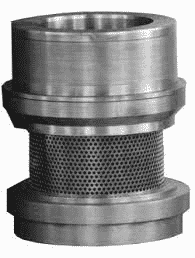The fluid passes from the control valve speedily. During fluid moving, it collides with the valve parts valve stem and its packing and creates turbulence. The turbulence creates audible noise. We shall discuss the control valve noise problems & their reduction in this post.
The presence of friction in a control valve increases the force necessary from the actuator to cause valve movement. If the actuator is electric or hydraulic, the only real problem with increased force is the additional energy required from the actuator to move the valve
If the actuator is pneumatic, however, a more serious problem arises from the combined effects of static and dynamic friction. Thus, friction is one of the reasons responsible for noise in the control valve.
The control valve noise depends on the type of fluid passing through the control valve. Different types of fluids that control valve handle are gas, liquid, etc.
The control valve used for gas services creates worse noise because of sonic(critical) flow. The control valve used for liquid services creates noise because of the cavitation. Noise is a sort of vibration that passes from air to air particles.
The vibration created by the control valve causes vibration in the connected piping at the inlet and outlet of the valve. This may cause the loosening of the threaded fasteners over time. one method of reducing vibration is the use of special trim resembling valve trim used to mitigate cavitation.
Noise Reduction in Control Valve
For control valve noise reduction, a common-guided valve trim design has a special cage designed with many holes for process gas flow through it. These holes increase the frequency of noise that is not audible by human ears. This also reduces the noise coupling to the pipes.
Control valve noise reduction trim for process gas service called Whisper trim. A “Whisper” plug and cage set is shown in the given photograph.

The holes may be straight through the cage wall and in a sophisticated version as well. In a sophisticated version of whisper trim, the small holes cause a labyrinth of passage. The labyrinth passage cause fluid to take several turns during passing through the wall of the cage. This allows relatively large pressure drops to develop without high fluid velocities, which is the primary causal factor for noise in control valves.
This is all about the control valve noise problems.